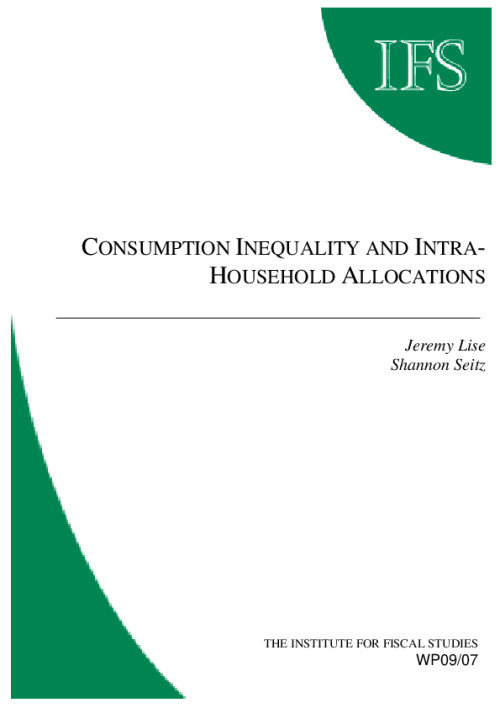<p>The consumption literature uses adult equivalence scales to measure individual level inequality. This practice imposes the assumption that there is no within household inequality. </p><p> </p><p>In this paper, we show that ignoring consumption inequality within households produces misleading estimates of inequality along two dimensions. First, the use of adult equivalence scales underestimates the level of cross sectional consumption inequality by 30 percent, as large differences in the earnings of husbands and wives translate into large differences in consumption allocations within households. Second, the rise in inequality since the 1970s is overstated by almost two-thirds: within household inequality declined over time as the share of income provided by wives increased. Our findings also indicate that increases in marital sorting on wages and hours worked can simultaneously explain virtually all of the decline in within household inequality and a substantial fraction of the rise in between household inequality for one and two adult households in the UK since the 1970s. </p><p></p>










